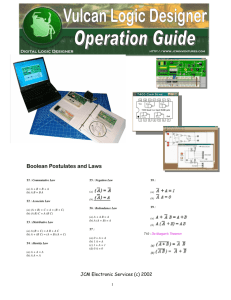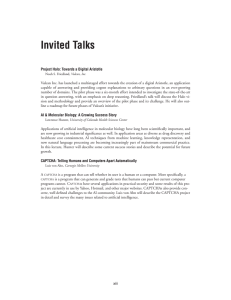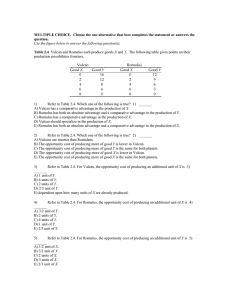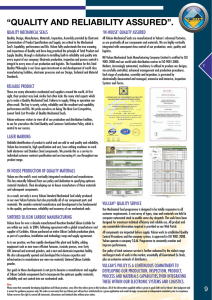BHP Billiton Olympic Dam expansion
advertisement
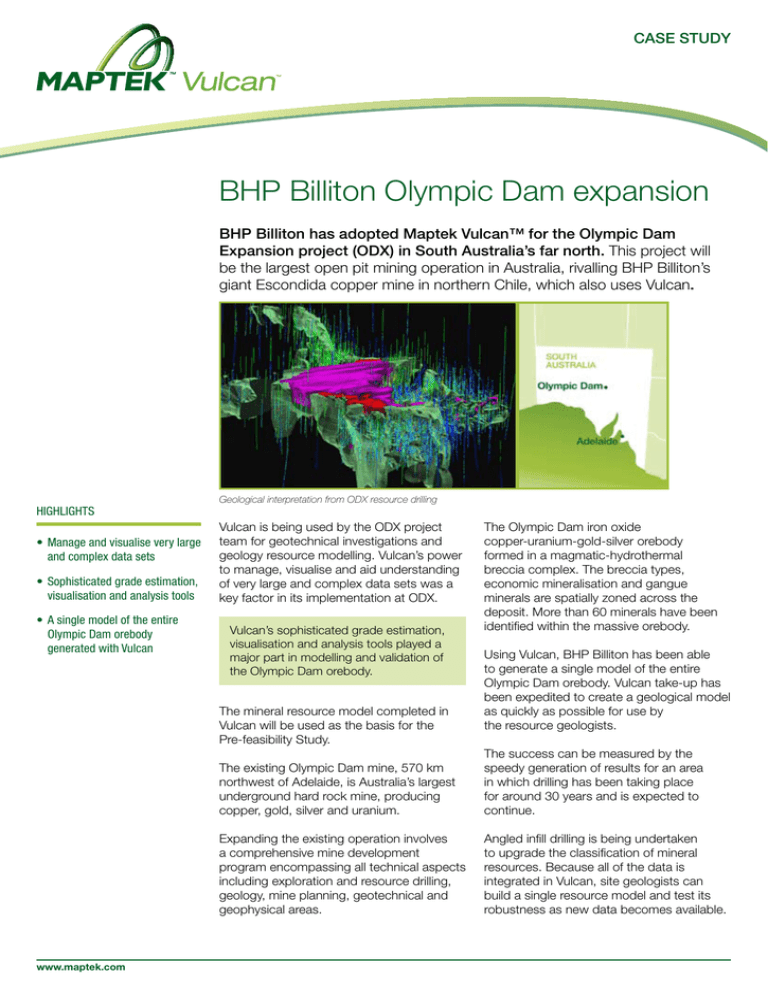
CASE STUDY BHP Billiton Olympic Dam expansion BHP Billiton has adopted Maptek Vulcan™ for the Olympic Dam Expansion project (ODX) in South Australia’s far north. This project will be the largest open pit mining operation in Australia, rivalling BHP Billiton’s giant Escondida copper mine in northern Chile, which also uses Vulcan. HIGHLIGHTS • Manage and visualise very large and complex data sets • Sophisticated grade estimation, visualisation and analysis tools • A single model of the entire Olympic Dam orebody generated with Vulcan Geological interpretation from ODX resource drilling Vulcan is being used by the ODX project team for geotechnical investigations and geology resource modelling. Vulcan’s power to manage, visualise and aid understanding of very large and complex data sets was a key factor in its implementation at ODX. Vulcan’s sophisticated grade estimation, visualisation and analysis tools played a major part in modelling and validation of the Olympic Dam orebody. The mineral resource model completed in Vulcan will be used as the basis for the Pre-feasibility Study. www.maptek.com The Olympic Dam iron oxide copper-uranium-gold-silver orebody formed in a magmatic-hydrothermal breccia complex. The breccia types, economic mineralisation and gangue minerals are spatially zoned across the deposit. More than 60 minerals have been identified within the massive orebody. Using Vulcan, BHP Billiton has been able to generate a single model of the entire Olympic Dam orebody. Vulcan take-up has been expedited to create a geological model as quickly as possible for use by the resource geologists. The existing Olympic Dam mine, 570 km northwest of Adelaide, is Australia’s largest underground hard rock mine, producing copper, gold, silver and uranium. The success can be measured by the speedy generation of results for an area in which drilling has been taking place for around 30 years and is expected to continue. Expanding the existing operation involves a comprehensive mine development program encompassing all technical aspects including exploration and resource drilling, geology, mine planning, geotechnical and geophysical areas. Angled infill drilling is being undertaken to upgrade the classification of mineral resources. Because all of the data is integrated in Vulcan, site geologists can build a single resource model and test its robustness as new data becomes available. Plan and long section profiles of Cu distribution in resource block Cu grade shell of Olympic Dam deposit compared to resource ODX drilling data and data from the existing underground operations are also available in Vulcan. The drillhole database is exported nightly and loaded into Vulcan, along with development triangulations and stopes. in speed for grade estimations; processes which previously took 11 hours are now completed in about seven hours, effectively allowing for two runs per day. VULCAN BENEFITS • Process huge amounts of block model data • Generate models fast • Load geological attributes and review dynamically • Instant feedback on model validity • Dynamically slice through the model to build continuous picture • Speed of processing • Reliable, accurate results This allows geologists at ODX access to up-to-date data and a view of previously mined areas that may interact with the potential open pit expansion. A geometrical problem arises here with calculating the minimum real thickness of the vein at |each channel. Vulcan scripting enables BHP Billiton to run processes in a sequential order, with the advantage of providing an audit trail of the modelling. Using dual processors allows Vulcan to be run simultaneously with the modelling process, providing effective resource utilisation for a project with firm deadlines. Because the channels are sampled at different angles from the vein, it is difficult to establish the actual minimum width based on the channel orientation and vein azimuth and dip in an efficient way. Estimation variables are based on the four metals – Cu, U, Au, Ag – as well as the mineralogy as it affects metallurgical recovery and mine planning. Metal grades are estimated using ordinary kriging. Vulcan can process huge amounts of block model data and generate models in a timely manner. Block models, multi-gigabytes in size with several million blocks are used for visualisation, with 30 x 30 x 15 m parent blocks, sub-blocked where better geological definition is required. The geotechnical team at ODX uses Vulcan to perform structural measurements. Fixed imagery collected via a televiewer is imported into Vulcan and wrapped around drillholes, allowing geotechnical staff to map and define the orientation of downhole structures. This information is then stored in a Vulcan geotechnical database for modelling important features. Vulcan also allows the geologists to load a particular attribute and review it dynamically to validate estimations. The rapid visualisation provides almost instant feedback on the model validity and allows geologists to build up a continuous picture as they dynamically slice through the model. This length is then used to create an ore composite, including internal waste as necessary, using the standard Vulcan compositing tools. Using computing hardware with dual processors has resulted in a 35% increase www.maptek.com Vulcan’s attribute linking feature allows geologists to click on a drillhole trace on screen to show the original core photography, adding another valuable dimension to the site database. The successful use of Vulcan in the resource study has produced a high quality, robust mineral resource estimate to pass to the mine planning engineers for the mine development phase of the expansion project. © 2009 Maptek 0209OD
